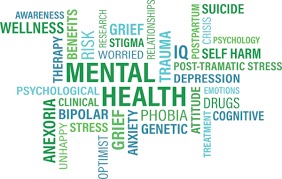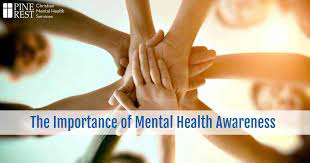The outbreak of COVID-19 has brought global effects which has turned the world into a different state. Most countries have implemented social distancing measures to slow down the spread of the infection, the most universally used
methods include home quarantines and national school closures.

The advent of Corona Virus has shattered the world and continues to have a massive impact on people of all walks of life including an adverse effect on ‘Global Mental Health’. Specially the students of all stages are the sufferers of this immense toll.

Due to the pandemic, we are living a new life, our teenagers are facing new situation. As per the report of the United Nations Educational, Scientific and Cultural Organization (UNESCO) on March 26, 2020, school closures have affected 87% of the world’s students.
The researchers have found that quarantined people are facing an elevated risk of developing acute and post traumatic stress symptoms and disorders, emotional disturbances, depression, stress, irritability, and anxiety-induced insomnia. Home quarantine and school closures during the pandemic have serious concerns about the ‘mental health’ of children and adolescents.

In addition to mentioning children and adolescents’ ‘mental health’ status during COVID-19 pandemic, the risks and protective factors need to be identified to understand who are the sufferers and what could be done to protect them against ‘mental health’ problems.
During home quarantine, parents are usually the ones who interact the most with children and adolescents. The World Health Organization (WHO) advises parents to discuss COVID-19 with their children in an honest and age-appropriate way. In this way, close and open communication between parents and children may serve as a protective factor in children’s ‘mental health’.

Moreover, ‘mental health’ professionals should develop guidelines for parents and guardians on how to
help their children while facing this crisis. The adolescents should feel that they are not alone in this
world. They must have time to relax by reading, listening to music and exploring new hobbies.

** As teachers, we can help our students by taking the following measures:
- Encourage our students to have regular connection with teachers and friends
by participating in online classes and extra curricular activities. - Help students find creative ways to spend quality time with family and friends .

- Inspire them to be active and do things what they enjoy.
- Create opportunities to write and talk about what they feel regarding the current
events. - Talk with students about healthy eating, their hobbies, pastimes, sleep and exercise.
- Motivate them to engage themselves in creative activities.
- Encourage them to connect with family, friends, and others in their community.

To sum up, the prevalence of anxiety, depression and disorder among the students can be lessened by
proper care and guidance from parents, relatives, teachers and well wishers. By identifying the factors
related their ‘mental health’ status, it can be said that friendly discussion between parent and child is a
must to remove the impact of home quarantine. Last but not the least, smooth and happy family
environment, quality time spent with family members and friends are essential to solve ‘mental health’
problems during COVID-19 pandemic.
Alia Rawshan Banu
Sr. Lecturer